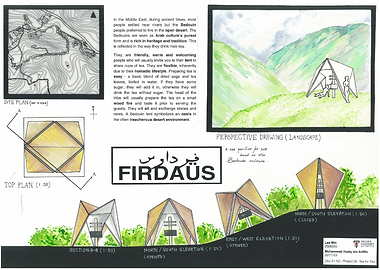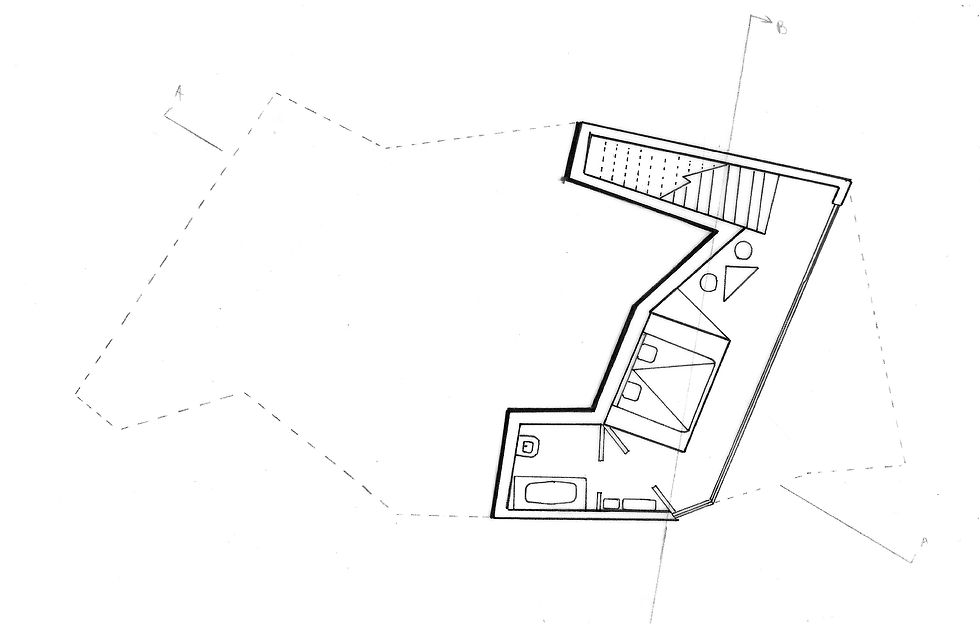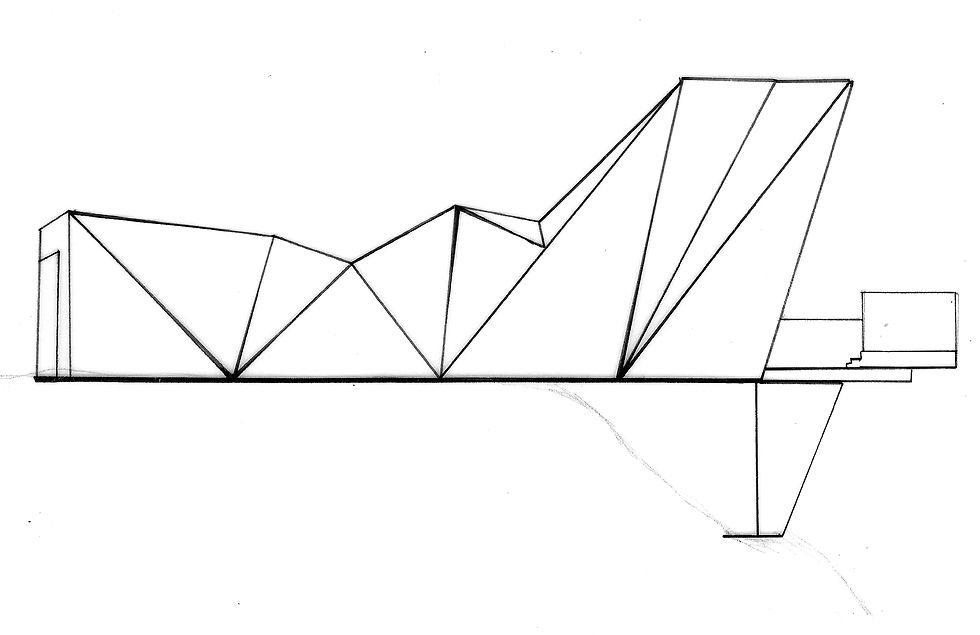Bachelor of Science (Hons) Architecture
Taylor's University Lakeside Campus, Malaysia
Project 1: Famous People, Familiar Faces
Diagrammatic Abstraction
This initial project introduced us to several icons of architecture.
In a group of 6, we were assigned to research and analyse SANAA, a Japanese architect firm run by two highly respected architects. We then focused in on a residential project and produced the following:
-
A complete set of manual architectural drawings
-
A set of diagrams translated to a series of A5 postcards
-
A white model to highlight an architectural element
I thought this was a very beneficial project as I had previously not exposed myself as much as I should have to the pioneers of modern architecture. This exercise enabled me to realize the many different approaches that have been taken to shape space, from many corners of the world. It has also been an exercise that has honed my analytical skills and the techniques by which to present the analysis. This has subconsciously made me look at my design with a more critical point of view, always challenging every design decision.
Project 2a: Site Analysis & Site Scanning
For this project, we travelled to Cameron Highlands to conduct a site analysis of a tea plantation as a preliminary to our final design project.
As a group of around 50 members, we were to produce a complete presentation of our analysis. This included categories such as site plan, existing buildings, climate, activities and circulation. To achieve this in just two days, we were divided into subgroups. I was part of the activities group.
Following the site analysis, we had to produce 4 A5 postcards. Using the analysis, I represented the natural physical site context into abstract forms, which were then used to develop conceptual ideas for the following project.
This was the first time conducting a site analysis and it was an eye-opening exercise, outlining the various factors which have to be taken into consideration in order for a design to fully respond to the site context. Furthermore, Cameron Highlands being a very hilly landscape with an interesting climate, it was challenging but made the analytical experience all the more worthwhile. I found that the process of translating the site into abstract forms which can then be used for conceptual ideas was especially interesting and helpful.

































































































Project 2b: Tea for Two
The requirement for this project is to design a tea pavilion for two people for the specific function of tea drinking. We had to choose a specific tea culture to study, analyze and design according to its specific requirements in terms of usage as well as cultural context. My partner and I decided on the Bedouin tea culture, a desert nomadic population.
From our study of the culture and the site analysis we had conducted, we designed the Firdaus. It is a moveable, interactive tea pavilion, abstracted from the forms of Bedouin tents and the desert landscape. It is moveable and not fixed to any particular site to reflect the nomadic nature of the culture itself.
An eye-opener in many ways, this project has enabled me to understand the process of designing according to the specific site context as well as cultural and functional needs. I loved researching about the specific culture and designing specifically to meet the requirements in an innovative way.
Project 2c: Tea House
Progressing from the previous project, this final individual project is to design a Tea House for one or two people. It is meant to be a getaway residential with an emphasis on the tea drinking experience, located on the tea plantation site. The total built up area has to be no more than 150 meters squared.
I decided to use the triangular motif I had used in the previous design to translate my concept of exponential experience. I believe that tea drinking is an activity that can be done anywhere and is done everywhere around the world, therefore what makes it different is the ambience that you do it in, the space in which you experience the activity of tea drinking.
This was the first time I had designed something of this scale, and it was a great learning experience. To be able to design a house was exciting and I think I have definitely learnt several architectural vocabulary which I have translated into my design. It proved that every design decision has to be intentional and thoroughly thought out. It was also the first time I had the chance of preparing the presentation board digitally and this was a process I enjoyed a lot. It was definitely satisfying when it came to final presentation.